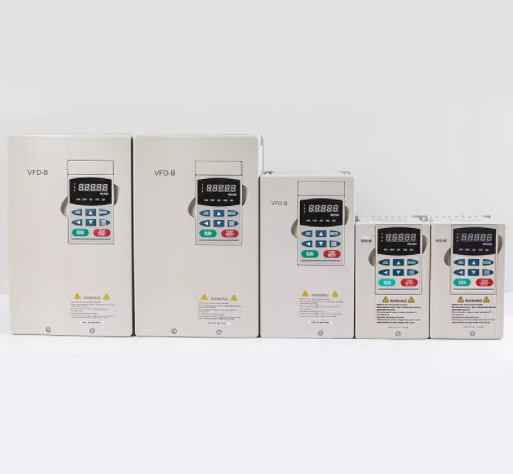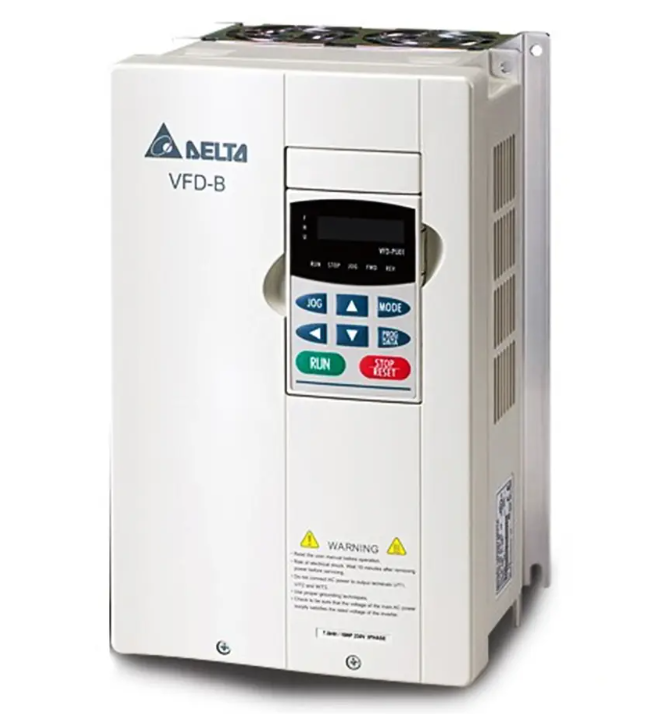O princípio de funcionamento do inversor Delta
Sep 26, 2024
Introdução à marca Delta Grupo é atualmente o fabricante líder mundial de produtos de fonte de alimentação comutada e detém uma posição de liderança de classe mundial em diversas áreas de produtos, incluindo o fornecimento de soluções abrangentes para gerenciamento de energia, exibições de vídeo, automação industrial, produtos de comunicação de rede e produtos relacionados a energia renovável.Princípio de economia de energia1. Economia de energia de frequência variávelA economia de energia dos conversores de frequência se manifesta principalmente na aplicação de ventiladores e bombas d'água. Para garantir a confiabilidade da produção, diversas máquinas de produção são projetadas com uma certa quantidade de excedente quando equipadas com acionamentos de força. Quando o motor não consegue operar a plena carga, além de atender aos requisitos do acionamento de potência, o excesso de torque aumenta o consumo de potência ativa, resultando no desperdício de energia elétrica. O método tradicional de regulação de velocidade para equipamentos como ventiladores e bombas é ajustar o volume de fornecimento de ar e água ajustando a abertura dos defletores e válvulas de entrada ou saída. A potência de entrada é alta e uma grande quantidade de energia é consumida no processo de interceptação dos defletores e válvulas. Ao usar a regulação de velocidade de frequência variável, se o requisito de vazão for reduzido, o requisito pode ser atendido reduzindo a velocidade da bomba ou do ventilador.De acordo com a mecânica dos fluidos, P (potência) = Q (vazão) × H (pressão), a vazão Q é proporcional à potência da velocidade de rotação N, a pressão H é proporcional ao quadrado da velocidade de rotação N, e a potência P é proporcional ao cubo da velocidade de rotação N. Se a eficiência da bomba d'água for constante, quando a vazão necessária diminui, a velocidade de rotação N pode diminuir proporcionalmente e, neste momento, a potência de saída do eixo P diminui em uma relação cúbica. O consumo de energia do motor da bomba d'água é aproximadamente proporcional à velocidade de rotação. Quando a vazão necessária Q diminui, a frequência de saída do conversor de frequência pode ser ajustada para reduzir proporcionalmente a velocidade do motor n. Neste ponto, a potência P do motor elétrico diminuirá significativamente de acordo com uma relação cúbica, economizando de 40% a 50% de energia em relação ao ajuste de defletores e válvulas, atingindo assim o objetivo de conservação de energia.Por exemplo, um motor de bomba centrífuga com potência de 55 kW consome 28,16 kW de eletricidade e economiza 48,8% de eletricidade quando a velocidade cai para 4/5 da velocidade original. Quando a velocidade cai para 1/2 da velocidade original, o consumo de energia é de 6,875 kW, economizando 87,5% de eletricidade.2. Compensação do fator de potência para economia de energiaA potência reativa não só aumenta a perda de linha e o aquecimento do equipamento, mas, mais importante ainda, a diminuição do fator de potência leva a uma redução da potência ativa na rede elétrica. Uma grande quantidade de energia reativa é consumida nas linhas, resultando em baixa eficiência do equipamento e sérios desperdícios. Depois de usar um dispositivo de regulação de velocidade de frequência variável, o efeito do capacitor de filtragem interno do conversor de frequência reduz a perda de potência reativa e aumenta a potência ativa da rede elétrica.3. Economia de energia com partida suaveA partida difícil de motores causa sérios impactos na rede elétrica e também exige capacidade excessiva da rede. A alta corrente e a vibração geradas durante a partida podem causar danos significativos aos defletores e válvulas, o que é extremamente prejudicial à vida útil de equipamentos e tubulações. Depois de usar o dispositivo de economia de energia de conversão de frequência, a função de partida suave do conversor de frequência iniciará a corrente de partida do zero e o valor máximo não excederá a corrente nominal, reduzindo o impacto na rede elétrica e os requisitos de fornecimento de energia capacidade e prolongando a vida útil de equipamentos e válvulas. Custos de manutenção de equipamentos economizados.Ambiente de uso1. A temperatura ambiente varia de -10 ℃ a+40 ℃. Ao remover o adesivo de poeira na extremidade superior, ele pode ser usado para temperaturas que variam de -10 ℃ a +50 ℃2. Evitar que a água da chuva pingue ou de ambientes úmidos3. Evite a exposição direta à luz solar4. Evitar névoa de óleo e erosão salina5. Evite líquidos e gases corrosivos6. Evite a entrada de poeira, algodão e aparas de metal7. Fique longe de materiais radioativos e inflamáveis8. Evitar interferência eletromagnética (máquina de solda, máquina elétrica)9. Instale longe de qualquer equipamento de aquecimento10. Evitar vibrações (puncionadeira). Se inevitável, instale almofadas de absorção de choque para reduzir a vibração11. Ao instalar vários conversores de frequência no painel de controle, preste atenção à sua colocação para dissipação de calor. Além disso, instale um ventilador de resfriamento para manter a temperatura ao redor dos conversores de frequência abaixo de 50 ℃.12. Avance a parte frontal do conversor de frequência e mantenha a parte superior voltada para cima durante a instalação para facilitar a dissipação de calor13. O espaço de instalação deve atender às seguintes normas: Se instalado dentro do disco ou no ambiente circundante, a tampa contra poeira do inversor pode ser removida para facilitar a dissipação de calor e ventilação do inversor.




